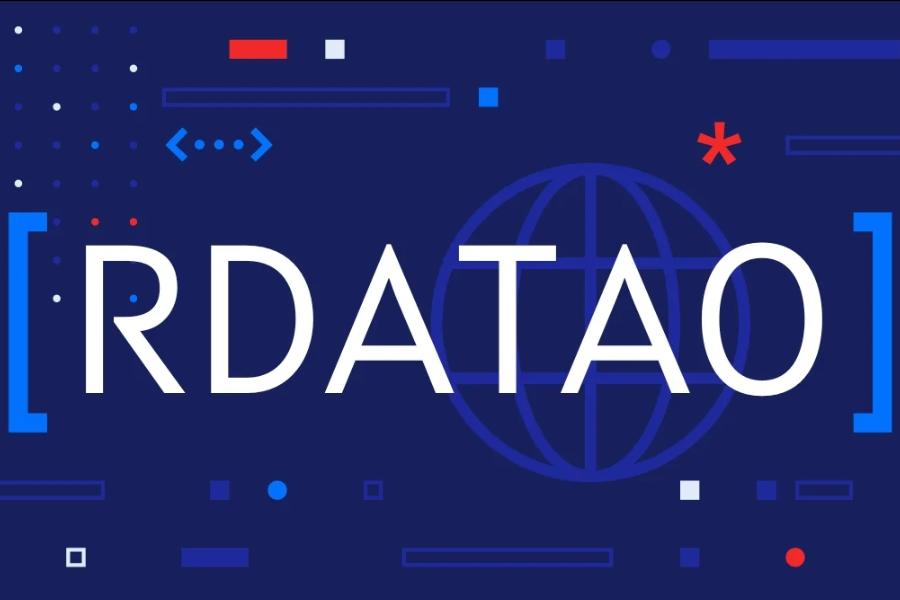Understanding RDataO: A Comprehensive and Ultimate Guide
RDataO is a revolutionary platform that is revolutionizing the collection, storage, processing, and analysis of data in the current data management and analytics environment. This guide explores RDataO, looking at its definition, characteristics, uses, and advantages in a variety of domains. This article will provide you a thorough grasp of RDataO, regardless of whether you’re a data scientist, researcher, business analyst, or just interested in the newest data technologies.
What is RDataO?
To improve the handling, storing, and interpretation of data, RDataO is a state-of-the-art data management and analysis application. RDataO is a robust platform designed to effectively handle large datasets, enhancing data analysis’s precision, speed, and efficacy. Across many industries, it is a useful tool because it makes data jobs easier for both technical and non-technical users.
History and Development of RDataO
In a time when data volume and complexity are only increasing, RDataO was created in response to the rising need for sophisticated data solutions. RDataO’s engineers concentrated on fusing sophisticated data manipulation features with intuitive user interfaces to produce a solution that can be utilized by a variety of people. RDataO has continuously changed since its launch, including new features to satisfy its users’ evolving requirements.
Core Features of RDataO
RDataO provides a comprehensive suite of features that make data handling streamlined and intuitive. A closer look at some of its primary features is provided below:
1. Data Storage
RDataO offers a robust framework for storing data, supporting multiple formats and ensuring compatibility with a variety of data sources.
- Varied Formats: RDataO is compatible with data formats like CSV, JSON, XML, and SQL databases, providing flexibility for different datasets.
- Efficient Storage: Advanced indexing and compression techniques reduce storage requirements and improve data access speed, making it ideal for large-scale datasets.
2. Data Manipulation
One of the standout features of RDataO is its extensive data manipulation toolkit, enabling users to clean, transform, and analyze data efficiently.
- Data Cleaning: Automated tools remove duplicate entries and handle missing values to maintain data accuracy.
- Data Transformation: Functions to normalize and aggregate data make it ready for analysis, enhancing data usability.
3. Integration Capabilities
Designed with versatility in mind, RDataO can seamlessly integrate with a wide array of data sources and applications.
- APIs: RDataO provides APIs for easy integration with external systems.
- Third-Party Tools: Compatible with popular data analysis and visualization tools, enhancing its functionality and accessibility.
Applications of RDataO
RDataO’s versatility makes it a valuable tool across various fields. Here are some key areas where RDataO is making an impact:
In Business
RDataO is used by businesses to make data-driven choices, optimize operations, and extract insights from data. Businesses can measure KPIs, predict trends, and comprehend client behavior thanks to its robust analytics capabilities.
- Customer Insights: RDataO enables businesses to analyze customer data, uncovering patterns and preferences.
- Operational Efficiency: RDataO helps monitor performance metrics, facilitating process optimization.
In Research
For researchers, RDataO’s data management features simplify handling large datasets and conducting complex analyses.
- Data Handling: RDataO can manage extensive research datasets with ease, allowing researchers to focus on data interpretation.
- Analysis: Provides tools for statistical analysis and data modeling, essential for research projects.
In Data Science
Data scientists benefit from RDataO’s advanced analytical capabilities, which streamline model-building, testing, and exploratory data analysis.
- Machine Learning: RDataO supports model training and evaluation, aiding in developing machine learning models.
- Exploratory Data Analysis (EDA): Offers visualization tools to interpret data patterns effectively.
How RDataO Works
To understand the workings of RDataO, it’s essential to explore its technical structure, data flow, and user interface.
Technical Architecture
RDataO employs a modular architecture designed to handle complex data processes efficiently, allowing for flexibility and scalability.
- Modular Design: Components can be updated or replaced independently, enhancing system adaptability.
- High Performance: Optimized for fast data processing and retrieval, RDataO handles large-scale data efficiently.
Data Flow
RDataO’s data flow is organized to maximize efficiency in data ingestion, processing, and storage.
- Ingestion: Data is imported from various sources into the platform.
- Processing: Once ingested, data is cleaned, transformed, and analyzed.
- Storage: Processed data is stored in a structured format, making it easy to retrieve and use.
User Interaction
RDataO’s UI is intended to take special care of both amateur and high level clients, giving dashboards, perceptions, and intuitive devices.
- Dashboards: Customizable dashboards allow users to track and analyze key metrics.
- Visualizations: RDataO includes visualization tools, making it easy to create graphs and charts for better data comprehension.
Also Read: G.G. Ginley: A Multifaceted Literary Journey of Inspiration and Influence
Benefits of Using RDataO
The advantages of RDataO make it a top choice for those working in data management and analysis.
Efficiency
RDataO’s automated processes and optimized algorithms reduce the time required for data processing and analysis.
- Fast Processing: Quick data retrieval and manipulation capabilities.
- Automation: Reduces manual labor through automated data cleaning and transformation.
Flexibility
RDataO’s adaptability allows users to tailor the platform to their specific needs, whether in business, research, or data science.
- Customizable: Users can configure RDataO to meet unique requirements.
- Versatile: Suitable for a variety of applications.
Scalability
With a scalable architecture, RDataO can handle increasing data volumes without compromising performance.
- Scalable Architecture: Easily accommodates growing datasets.
- Resource Management: Efficiently uses system resources to maintain performance.
Challenges and Considerations
Despite its strengths, there are a few considerations to keep in mind when adopting RDataO.
Learning Curve
While user-friendly, RDataO may require some learning, particularly for users new to data management tools.
- Training Resources: Access to tutorials and documentation aids users in mastering RDataO.
- Support: A strong user community and support team help resolve any challenges.
Compatibility Issues
Ensuring compatibility with existing systems and data sources can present challenges, especially during integration.
- Integration Testing: It’s essential to test compatibility with existing tools and systems.
- Data Migration: Proper planning is necessary for smooth data migration.
Security Concerns
Data security is a critical consideration when using any data management platform, including RDataO.
- Data Encryption: Uses encryption to protect data.
- Access Controls: Allows for the implementation of user access controls to secure sensitive information.
Getting Started with RDataO
For those interested in using RDataO, here are the initial steps to take:
Installation
To start using RDataO, download the software from its official website and follow the installation instructions.
- Download: Access the installer from the RDataO website.
- Installation Steps: A guided installation process simplifies setup.
Basic Setup
After installation, configuring initial settings and connecting to data sources are the next steps.
- Configuration: Set up user preferences and system settings.
- Data Connection: Connect RDataO to relevant databases and data sources.
First Steps in Data Analysis
With RDataO, beginners can start by importing data and exploring its structure.
- Data Import: Load data into RDataO.
- Initial Analysis: Use built-in tools to perform basic data analysis.
Case Studies
Examining real-world applications of RDataO can provide insight into its practical impact.
Real-World Examples
- Business Case Study: A retail company used RDataO to improve sales forecasting.
- Research Case Study: An academic institution managed large-scale research data effectively using RDataO.
Success Stories
Real-world success stories highlight how RDataO has helped organizations achieve their goals.
- Success in Business: Companies have experienced increased efficiency and profitability.
- Success in Research: RDataO has enabled academic institutions to enhance research outcomes.
Future of RDataO
RDataO is continuously evolving, with new features and improvements on the horizon.
Upcoming Features
New functionalities and improvements are frequently added to RDataO, informed by user feedback.
- Feature Updates: New tools and functionalities are regularly introduced.
- User Feedback: User suggestions help shape future development.
Industry Trends
Staying informed about industry trends can help users anticipate changes in data management and analysis.
- Emerging Technologies: Integration with emerging technologies.
- Market Trends: Understanding RDataO’s position in the broader data management landscape.
Conclusion
In the present information driven world, having proficient devices for information the board and examination is significant. RDataO offers a strong and flexible arrangement that takes special care of different client needs, from business and exploration experts to information researchers. Its strong elements, instinctive point of interaction, and adaptability make RDataO a fundamental apparatus for exploring complex information challenges.
FAQs
What is RDataO?
RDataO is an advanced data management and analysis platform designed to handle large datasets, offering powerful storage, manipulation, and integration capabilities.
How does RDataO improve data management?
RDataO enhances data management by automating data cleaning, supporting efficient storage, and enabling integration with third-party tools.
What are the main benefits of RDataO?
RDataO’s main benefits include efficiency, flexibility, scalability, and security, making it ideal for various applications.
How can I start using RDataO?
To get started, download RDataO from its official website, complete the installation, and connect to your data sources for analysis.
If You Want tTo Learn More Information Please Visit: MediumThink.com






